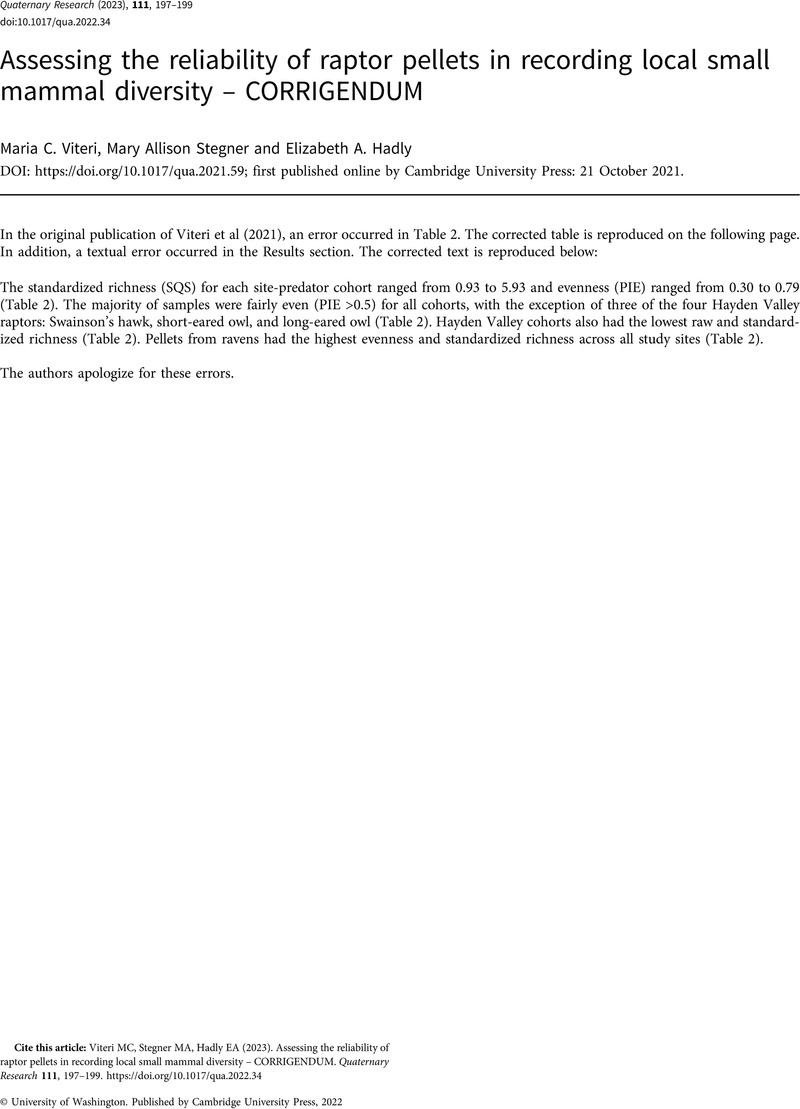No CrossRef data available.
Article contents
Assessing the reliability of raptor pellets in recording local small mammal diversity – CORRIGENDUM
Published online by Cambridge University Press: 16 September 2022
Abstract
An abstract is not available for this content so a preview has been provided. Please use the Get access link above for information on how to access this content.

- Type
- Correction
- Information
- Copyright
- Copyright © University of Washington. Published by Cambridge University Press, 2022
References
Viteri, M., Stegner, M., & Hadly, E. (2022). Assessing the reliability of raptor pellets in recording local small mammal diversity. Quaternary Research, 106, 1–10. doi:10.1017/qua.2021.59CrossRefGoogle Scholar



